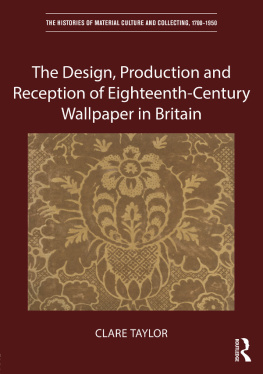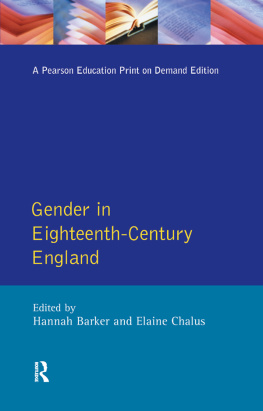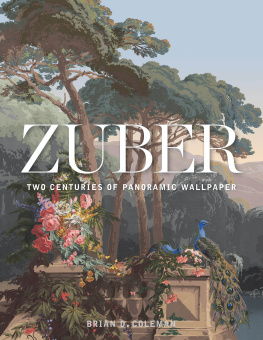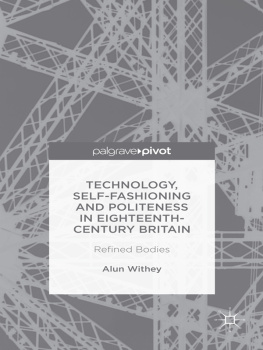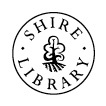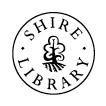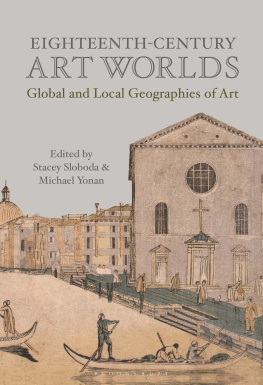
p.i
The Design, Production and Reception of Eighteenth-Century Wallpaper in Britain
Wallpapers spread across trades, class and gender is charted in this first full-length study of the materials use in Britain during the long eighteenth century. It examines the types of wallpaper that were designed and produced and the interior spaces it occupied, from the country house to the homes of prosperous townsfolk and gentry, showing that wallpaper was hung by Earls and merchants as well as by aristocratic women. Drawing on a wide range of little known examples of interior schemes and surviving wallpapers, together with unpublished evidence from archives including letters and bills, it charts wallpapers evolution across the century from cheap textile imitation to innovative new decorative material. Wallpapers growth is considered not in terms of chronology, but rather alongside the categories used by eighteenth-century tradesmen and consumers, from plains to flocks, from Chinese papers to papier mch and from stucco papers to materials for creating print rooms. It ends by assessing the ways in which eighteenth-century wallpaper was used to create historicist interiors in the twentieth century. Including a wide range of illustrations, many in colour, the book will be of interest to historians of material culture and design, scholars of art and architectural history as well as practising designers and those interested in the historic interior.
Clare Taylor is Senior Lecturer in Art History, The Open University.
Cover image: Detail of flocked wallpaper hung at Eagle House, Bathford, c.175080. Victoria & Albert Museum, London, E.2371968. Photo: Victoria & Albert Museum, London.
p.ii
The Histories of Material Culture and Collecting, 17001950
Series Editor: Stacey J. Pierson, University of London
The Histories of Material Culture and Collecting, 17001950 provides a forum for the broad study of object acquisition and collecting practices in their global dimensions. The series seeks to illuminate the intersections between material culture studies, art history, and the history of collecting. It takes as its starting point the idea that objects both contributed to the formation of knowledge in the past and likewise contribute to our understanding of the past today. The human relationship to objects has proven a rich field of scholarly inquiry, with much recent scholarship either anthropological or sociological rather than art historical in perspective. Underpinning this series is the idea that the physical nature of objects contributes substantially to their social meanings, and therefore that the visual, tactile, and sensual dimensions of objects are critical to their interpretation. This series therefore seeks to bridge anthropology and art history, sociology and aesthetics.
For a full list of titles in this series, please visit www.routledge.com/The-Histories-of-Material-Culture-and-Collecting-1700-1950/book-series/ASHSER2128
Materializing Gender in Eighteenth-Century Europe
Edited by Jennifer G. Germann and Heidi A. Strobel
Silver in Georgian Dublin
Making, Selling, Consuming
Alison FitzGerald
Private Collecting, Exhibitions, and the Shaping of Art History in London
The Burlington Fine Arts Club
Stacey J. Pierson
Nature and the Nation in Fin-de-Sicle France
The Art of Emile Gall and the cole de Nancy
Jessica M. Dandona
Collecting and Displaying Chinas Summer Palace in the West
The Yuanmingyuan in Britain and France
Louise Tythacott
p.iii
The Design, Production and
Reception of Eighteenth-Century
Wallpaper in Britain
Clare Taylor

p.iv
First published 2018
by Routledge
2 Park Square, Milton Park, Abingdon, Oxon OX14 4RN
and by Routledge
711 Third Avenue, New York, NY 10017
Routledge is an imprint of the Taylor & Francis Group, an informa business
2018 Clare Taylor
The right of Clare Taylor to be identified as author of this work has been asserted by her in accordance with sections 77 and 78 of the Copyright, Designs and Patents Act 1988.
All rights reserved. No part of this book may be reprinted or reproduced or utilised in any form or by any electronic, mechanical, or other means, now known or hereafter invented, including photocopying and recording, or in any information storage or retrieval system, without permission in writing from the publishers.
Trademark notice : Product or corporate names may be trademarks or registered trademarks, and are used only for identification and explanation without intent to infringe.
British Library Cataloguing-in-Publication Data
A catalogue record for this book is available from the British Library
Library of Congress Cataloging-in-Publication Data
A catalog record for this book has been requested
ISBN: 978-1-4724-5615-1 (hbk)
ISBN: 978-1-351-02178-4 (ebk)
Typeset in Sabon LT Std
by Swales & Willis Ltd, Exeter, Devon, UK
p.v
For Peter
p.ix
Unless otherwise stated all wallpapers listed are English.
p.x
p.xi
p.xii
p.xiii
p.xiv
p.xv
p.xvi
In the course of researching this book and the PhD which preceded it over the past twelve years I have prayed for sunny days in an English winter, blithely followed instructions such as drive through the woods for three miles and replaced my torch with a mobile phones light. I have peered into attics, cupboards and behind dadoes and on one occasion been presented with a Chinese border paper found behind a filing cabinet. None of these encounters would have been possible without the archivists, curators, house managers and owners who have facilitated my access to spaces and documents relating to wallpapers. I am immensely grateful to: Stephen Astley (formerly of the Soane Museum); Alexia Clark (Stroud District Museum Service); Ciara Canning and Debbie Barnes (Colchester & Ipswich Museums); Sophie Cummings (Lydiard Park); Tracey Earl (Coutts & Co); Elise Edwards and Catherine Grigg (Wycombe Museums); Amy Frost (Bath Preservation Trust); Sally Goodsir (Royal Collection Trust); Alice Halden, Fiona Sheridan, Rachel Lloyd and Mark Hartwell (Stafford Borough Council); Emma Hardy (The Geffrye Museum); Jo Johnston (Bowood Archives); Carole Jones (The Kelmarsh Trust); Elinor Ling (The Fitzwilliam Museum); Alexandra MacCulloch (formerly of Buckinghamshire County Museum, now with Historic Royal Palaces); Tiia Marcos; Janet McNamara (Boston Manor House); Eloise Morton (River & Rowing Museum, Henley-on-Thames); Tim Oliver; Laura Houliston, Jerzy Kierku-Bieliski, Charlie Newman and Cathy Power (English Heritage); Lee Prosser (Historic Royal Palaces); Lars Roede (Oslo Museum); Fiona Salvesen-Murrell (Paxton House); Lindsay Speight (Watford Museums); Jill Tovey (Croome Court); and to the staff of the Ashmolean Museum, University of Oxford; Catalyst Science Discovery Centre, Widnes; and Wotton-under-Edge Heritage Centre. At the V&A special thanks are due to the Word and Image Department, in particular to the Print Room staff, to Gill Saunders, and to Frances Rakine who patiently responded to my queries and also conducted me around Blythe House. In the Furniture, Textiles and Fashion Department I am grateful to Lizzie Bisley (and previously to James Yorke) who assisted me in consulting the Departments archive. My site visits to National Trust properties have also benefited from the assistance of Trust staff, in particular Victoria Moulton (formerly of Felbrigg Hall); David Moore (Dunster Castle); Diana Shaw (Blicking Hall); Tracy Clement (Shugborough) and Helen Webb (Clandon Park). Nino Strachey, Sophie Chessum and the late Sue Baumbach were all generous in discussing schemes connected with properties in their care. In addition I am grateful to the following for their invaluable assistance in tracing eighteenth-century schemes and references: Katie Arber; Anna Chalcroft; Helen Clifford; David Conradsen; Sue Donnelly; Jane Eade; Michael Garton; Sam Hearn; Miles Hobart-Hampden; Gareth Hughes; Kevin Rogers; Lindsay Speight and Gillian Williamson.
Next page
